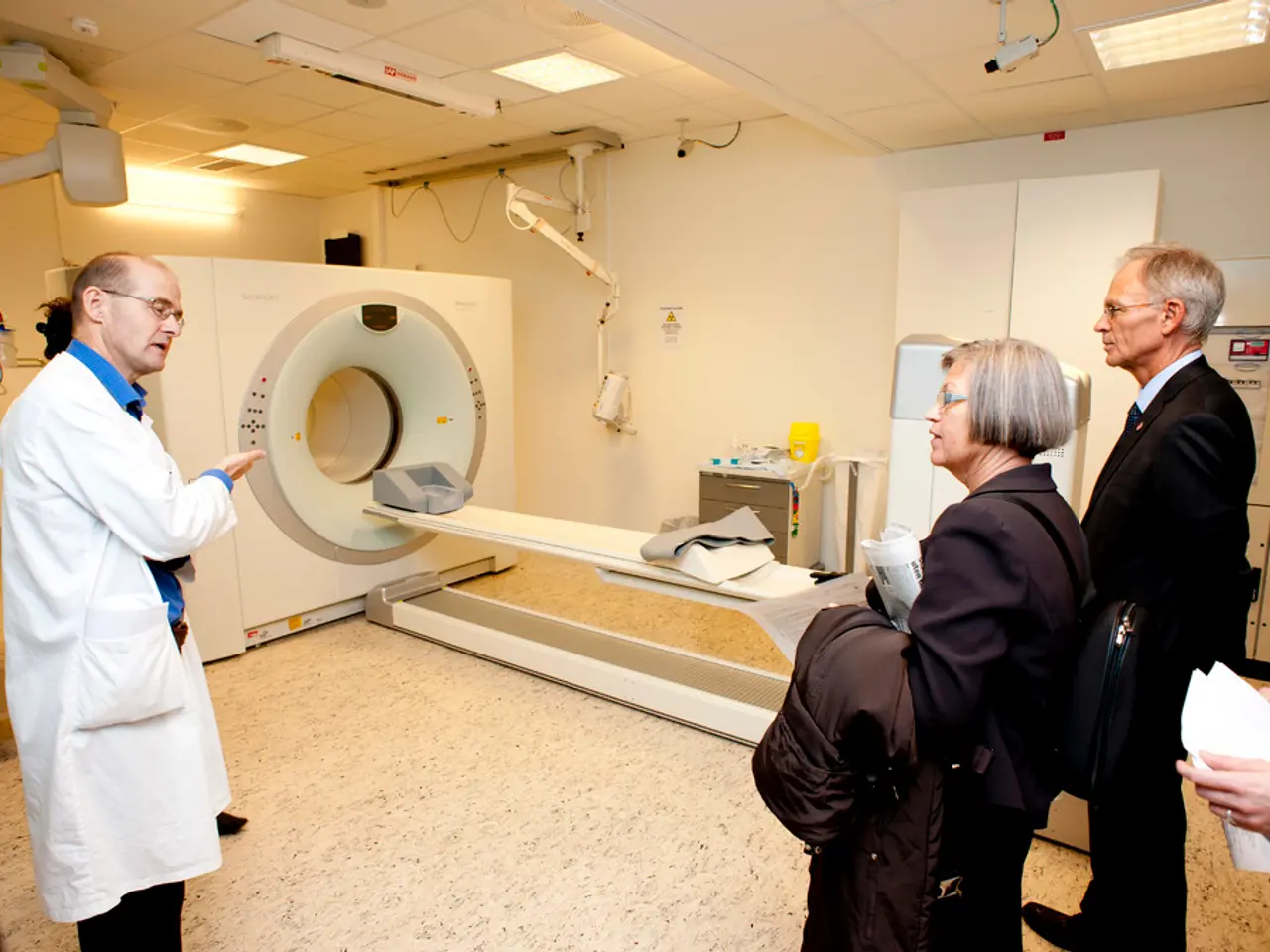Artificial Intelligence Anticipating and Thwarting Healthcare Staff Departures
In the rapidly evolving landscape of healthcare, retaining skilled professionals has become a critical challenge. High nurse turnover continues to strain care quality and budgets, with the average cost of turnover for a single bedside RN now reaching an 8.6% increase over the previous year, amounting to $61,110 [1].
To address this issue, forward-thinking leaders are evolving their strategies, treating retention as a dynamic operations challenge rather than a static HR function [2]. AI-powered solutions are at the forefront of this transformation, focusing on dynamic scheduling and real-time data analysis to optimize workforce management, reduce burnout, and improve staff satisfaction.
Dynamic Scheduling, a key AI-driven approach, analyzes multiple factors such as staff qualifications, certifications, preferences, past performance, patient acuity, and unit culture to create optimized, flexible schedules that balance workload and accommodate staff needs [3]. This reduces scheduling conflicts and burnout caused by rigid or overtime-heavy rosters.
Real-Time Data Analysis is another crucial component. AI continuously processes real-time data on staffing levels, patient census, acuity changes, and staff availability to make immediate scheduling adjustments or fill unexpected gaps quickly. This responsiveness helps maintain care quality and staff morale during sudden demand shifts or absences [3].
AI also streamlines hiring processes by ensuring hires are better matched to roles and organizational culture, reducing turnover from poor fit. Automation speeds hiring and onboarding, decreasing prolonged vacancies that strain teams [1][2].
Task Automation and Administrative Support further reduce burdens on staff by automating routine documentation, credentialing, and workflow management, freeing nurses and clinicians to focus on patient care [3][2].
Predictive Analytics for Workforce Planning enables proactive interventions such as adjusting shifts or deploying additional resources before retention issues escalate [1][4].
These solutions contribute to the implementation of strategic and adaptable staffing models that improve work-life balance, reduce burnout, and foster a supportive environment—critical factors in retaining healthcare professionals [5][2]. Leading examples include AI-powered platforms like those offered by ShiftMed and Incredible Health [1][2].
Mentorship, too, plays a significant role in retention. A recent study found that 58.9% of nurses cited mentorship as a positive influence on their decision to stay in the profession [6]. Structured mentoring programs have shown turnover reductions between 2% and 15% [7].
Todd Owens, CEO and co-founder of Kevala.AI, is one of the visionaries driving this change. With over 20 years of experience leading high-growth companies in healthcare and enterprise tech, Owens is at the helm of shaping the future of retention through real-time data and smarter logistics [8].
In conclusion, the future of healthcare retention lies in the intersection of real-time data and smarter logistics. It's not just about keeping people happy; it's about removing the friction that drives them out [8]. By adopting AI-driven solutions, healthcare organizations can create a more efficient, stable workforce and ultimately, improve patient care.
References:
[1] Healthcare IT News. (2021). The high cost of nurse turnover: How healthcare organizations can reduce it. https://www.healthcareitnews.com/news/high-cost-nurse-turnover-how-healthcare-organizations-can-reduce-it
[2] Health Leaders Media. (2021). How AI is transforming healthcare workforce management. https://www.healthleadersmedia.com/clinical-care/how-ai-is-transforming-healthcare-workforce-management
[3] Healthcare Analytics News. (2021). AI in healthcare: The future of staffing solutions. https://www.healthcareitnews.com/news/ai-healthcare-future-staffing-solutions
[4] Healthcare Finance News. (2021). Predictive analytics for workforce planning: A game-changer for healthcare. https://www.healthcarefinancenews.com/news/predictive-analytics-workforce-planning-game-changer-healthcare
[5] Becker's Hospital Review. (2021). Strategic staffing models for healthcare: Balancing work-life and reducing burnout. https://www.beckershospitalreview.com/workforce/strategic-staffing-models-for-healthcare-balancing-work-life-and-reducing-burnout.html
[6] American Journal of Medical Quality. (2020). The impact of mentorship on nurse retention. https://www.ajmq.com/doi/10.1177/1062860620957064
[7] Journal of Nursing Administration. (2019). The effect of structured mentoring programs on nurse retention. https://journals.lww.com/jona-journal/Abstract/2019/09000/The_Effect_of_Structured_Mentoring_Programs_on.11.aspx
[8] Healthcare IT News. (2021). The future of retention is real-time data and smarter logistics. https://www.healthcareitnews.com/news/future-retention-real-time-data-and-smarter-logistics
- Todd Owens, with his extensive background in healthcare and enterprise technology, is a visionary driving the future of retention in healthcare through real-time data and smarter logistics, serving as the CEO and co-founder of Kevala.AI.
- Mentorship, a significant factor in retaining healthcare professionals, has shown to reduce nurse turnover by as much as 15%, as indicated in a study where 58.9% of nurses cited mentorship as a positive influence on their decision to continue in the profession.
- In therapidly evolving healthcare landscape, AI-driven solutions, such as dynamic scheduling, real-time data analysis, task automation, predictive analytics for workforce planning, and streamlined hiring processes, are key to creating a more efficient, stable workforce, ultimately leading to improved patient care, reduced burnout, and a better work-life balance.




